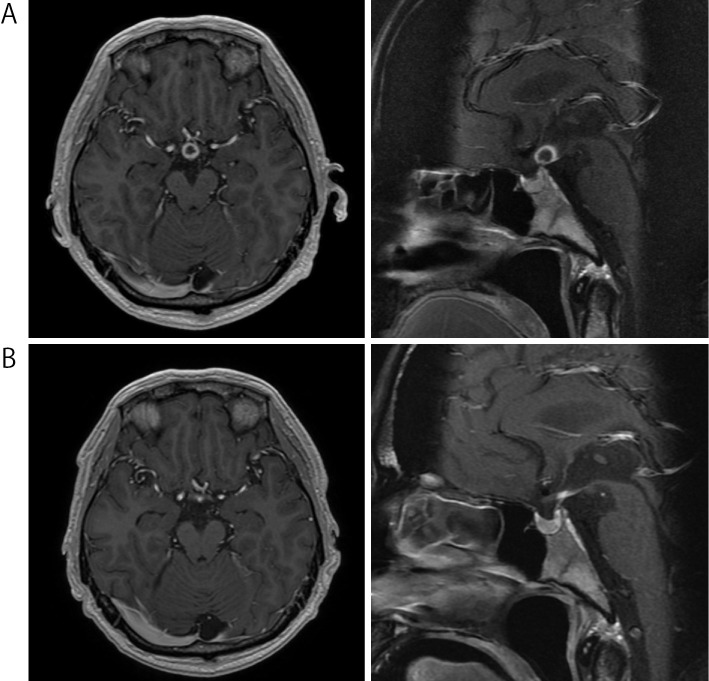A 44-year-old man presented to the emergency department with syncope and hypotension. Six months earlier, he had been diagnosed with stage IV follicular lymphoma in the thorax and abdomen. He received six courses of standard chemotherapy followed by monthly rituximab. He complained of excess urination two months before presentation. On admission, gadolinium-enhanced magnetic resonance imaging (MRI) identified invasion of the hypothalamus by ring-enhancing lymphoma (Picture). He was diagnosed with hypopituitarism and central diabetes insipidus based on a battery of pituitary stimulation tests; the secretion of all pituitary hormones, except for prolactin, was disturbed at various levels. Treatment included hydrocortisone and desmopressin, together with high-dose intrathecal methotrexate. The symptoms were markedly improved, and repeat MRI showed the almost complete disappearance of the hypothalamic tumor (Picture). He was then treated with monthly rituximab as well as 15 mg hydrocortisone and 0.25 μg desmopressin daily. Central nervous system lymphoma presents with various contrast patterns, including ring enhancement, on MRI (1).
Picture.
The authors state that they have no Conflict of Interest (COI).
References
- 1. Haldorsen IS, Espeland A, Larsson EM. Central nervous system lymphoma: characteristic findings in traditional and advanced imaging. AJNR Am J Neuroradiol 32: 984-992, 2011. [DOI] [PMC free article] [PubMed] [Google Scholar]



